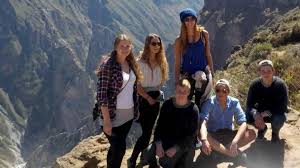
Exploring the Amazon: Gap Year Programs in the Rainforest
Sustainable travel is more than simply a trend. It’s a responsible approach to exploring the world that prioritizes the environment, respect for culture as well as economic benefits to local communities. As travelers become increasingly conscious of their effect on the planet eco-friendly gap-year programs in Latin America are gaining popularity. These programs not only provide rewarding experiences, but also make a positive impact on the places they visit. This article examines the fundamentals of sustainable travel and provides some of the best eco-friendly gap year programs that are available in Latin America.
What is Sustainable Travel?
Sustainable travel involves making a conscious effort to reduce the negative impacts that tourism has on our environment as well as local culture. It can be as simple as choosing eco-friendly accommodations and transportation to supporting local businesses and participating in conservation initiatives. The aim is to leave a positive footprint, leaving destinations better than they were found.
Why Latin America?
Latin America is a varied and vibrant region, with a wealth in beauty, natural beauty, and cultural heritage. Beginning from in the Amazon forests to Andes mountains of the Andes, this region is full of opportunities for sustainable travel. Numerous people living in communities in Latin America are keen to share their cultures along with their resources and culture, making the perfect location for eco-friendly gap year programmes. Participants can participate in worthwhile projects that benefit both the environment as well as the community.
Eco-Friendly Gap Year Programs
Volunteer Programs Numerous organizations offer volunteering programs focusing on conservation initiatives, such as wildlife protection, reforestation or marine conservation. For instance, programs in Costa Rica might involve the conservation of sea turtles in projects, while those in Ecuador may be focused on protecting the Amazon rainforest.
Cultural Immersion Sustainability isn’t only concerned with environmental protection; it’s also about appreciation of culture. Gap calendars that include homestays or community-based tourism allow tourists to interact with local families, participate in the traditional traditions and get a better understanding of the cultural and social dynamics of the host communities.
Adventure Travel: Many eco-friendly gap-year programs include adventure activities such as kayaking, hiking, and the observation of wildlife. These activities often highlight the importance of conserving the natural habitats of wildlife and preserving their habitats and wildlife, which makes them an integral element of sustainable travel.
Workshops and Educational Programs Certain programs offer seminars about sustainable agriculture, permaculture and other eco-friendly methods. These opportunities for education let participants gain hands-on experience while studying the challenges and solutions related to sustainable development in the region.
Conclusion
Sustainable travel is an effective way to travel the world while making an impact. Eco-friendly Gap Year in Latin America offer a unique combination of adventure, cultural immersion and environmental conservation. When choosing sustainable travel choices, travelers can contribute to the preservation of the planet and the well-being of local communities, ensuring that the future generations will be able to have the opportunity to enjoy these wonderful destinations.